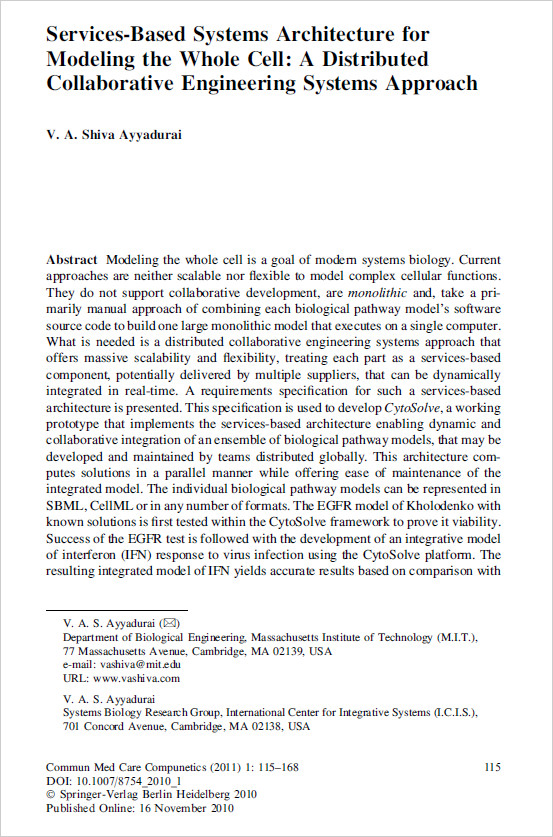Services-Based Systems Architecture for Modeling the Whole Cell: A Distributed Collaborative Engineering Systems Approach
V. A. S. AYYADURAI
Commun Med Care Compunetics (2011) 1: 115–168 115 © Springer-Verlag Berlin Heidelberg 2010
DOI: 10.1007/8754_2010_1
Abstract:
Modeling the whole cell is a goal of modern systems biology. Current approaches are neither scalable nor flexible to model complex cellular functions. They do not support collaborative development, are monolithic and, take a primarily manual approach of combining each biological pathway model’s software source code to build one large monolithic model that executes on a single computer. What is needed is a distributed collaborative engineering systems approach that offers massive scalability and flexibility, treating each part as a services-based component, potentially delivered by multiple suppliers, that can be dynamically integrated in real-time. A requirements specification for such a services-based architecture is presented. This specification is used to develop CytoSolve, a working prototype that implements the services-based architecture enabling dynamic and collaborative integration of an ensemble of biological pathway models, that may be developed and maintained by teams distributed globally. This architecture computes solutions in a parallel manner while offering ease of maintenance of the integrated model. The individual biological pathway models can be represented in SBML, CellML or in any number of formats. The EGFR model of Kholodenko with known solutions is first tested within the CytoSolve framework to prove it viability. Success of the EGFR test is followed with the development of an integrative model of interferon (IFN) response to virus infection using the CytoSolve platform. The resulting integrated model of IFN yields accurate results based on comparison with previously published in vitro and in vivo studies. A open web-based environment for collaborative testing and continued development is now underway and available on www.cytosolve.com. As more biological pathway models develop in a disparate and decentralized manner, this architecture offers a unique platform for collaborative systems biology, to build large-scale integrative models of cellular function, and eventually one day model the whole cell.

